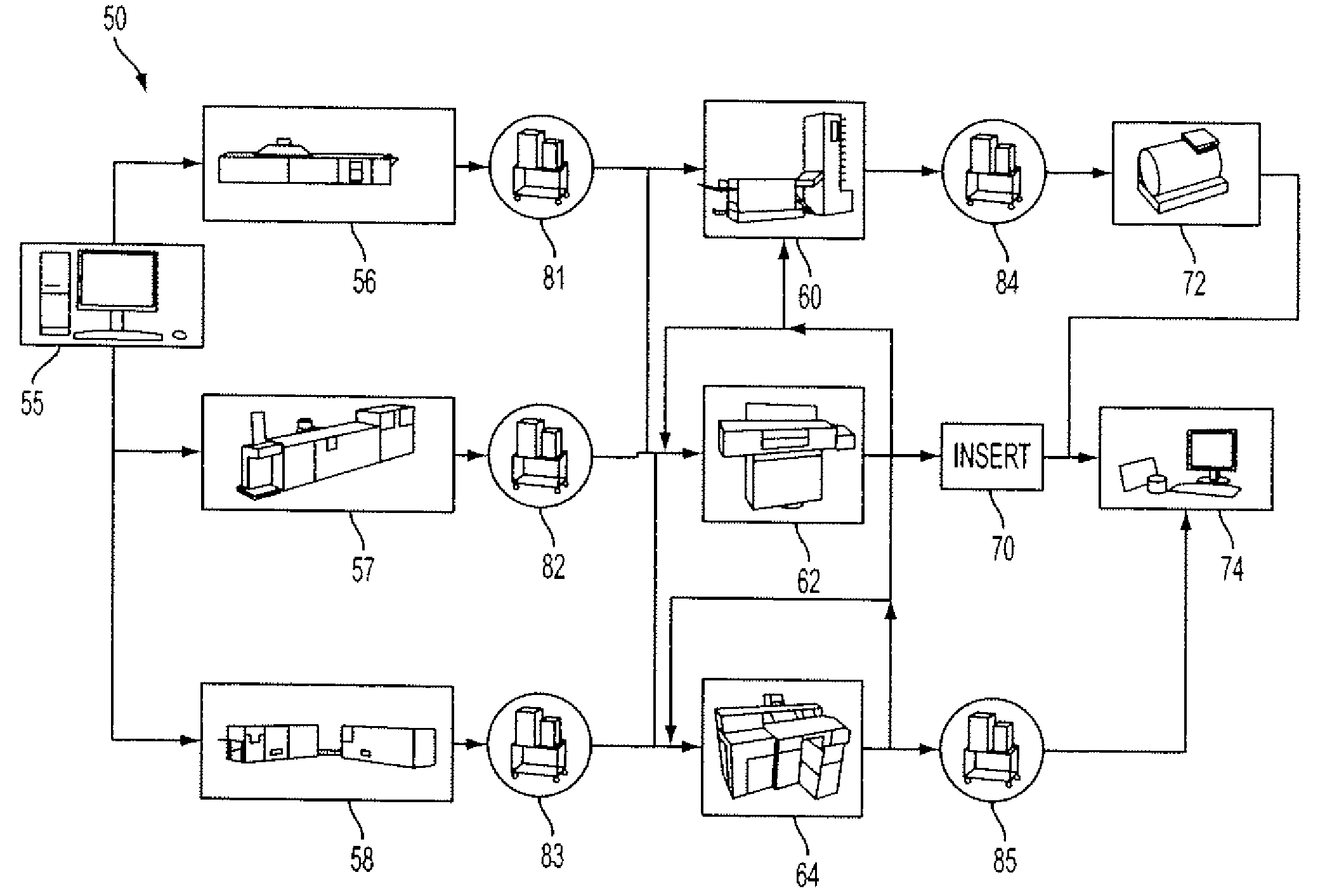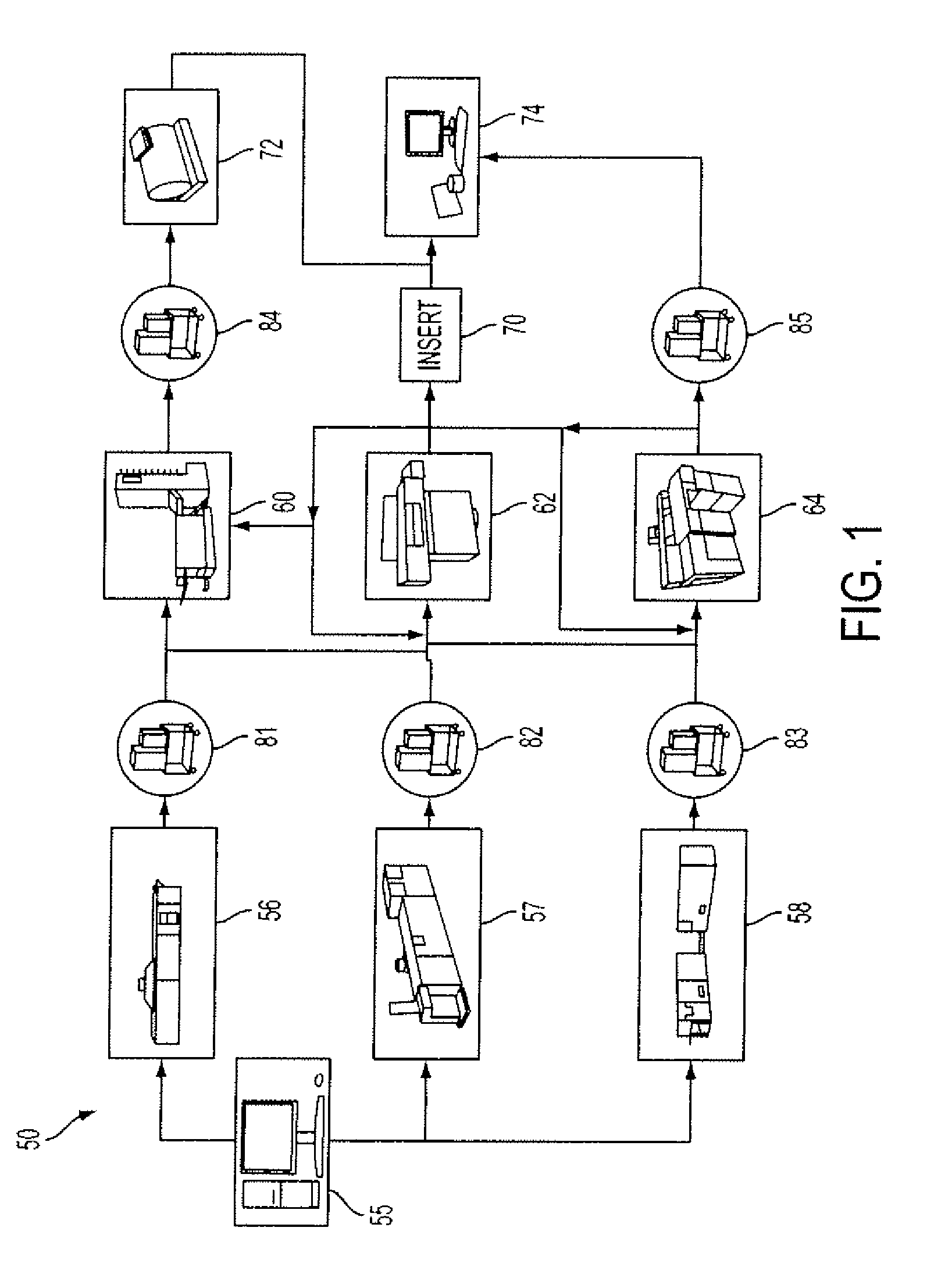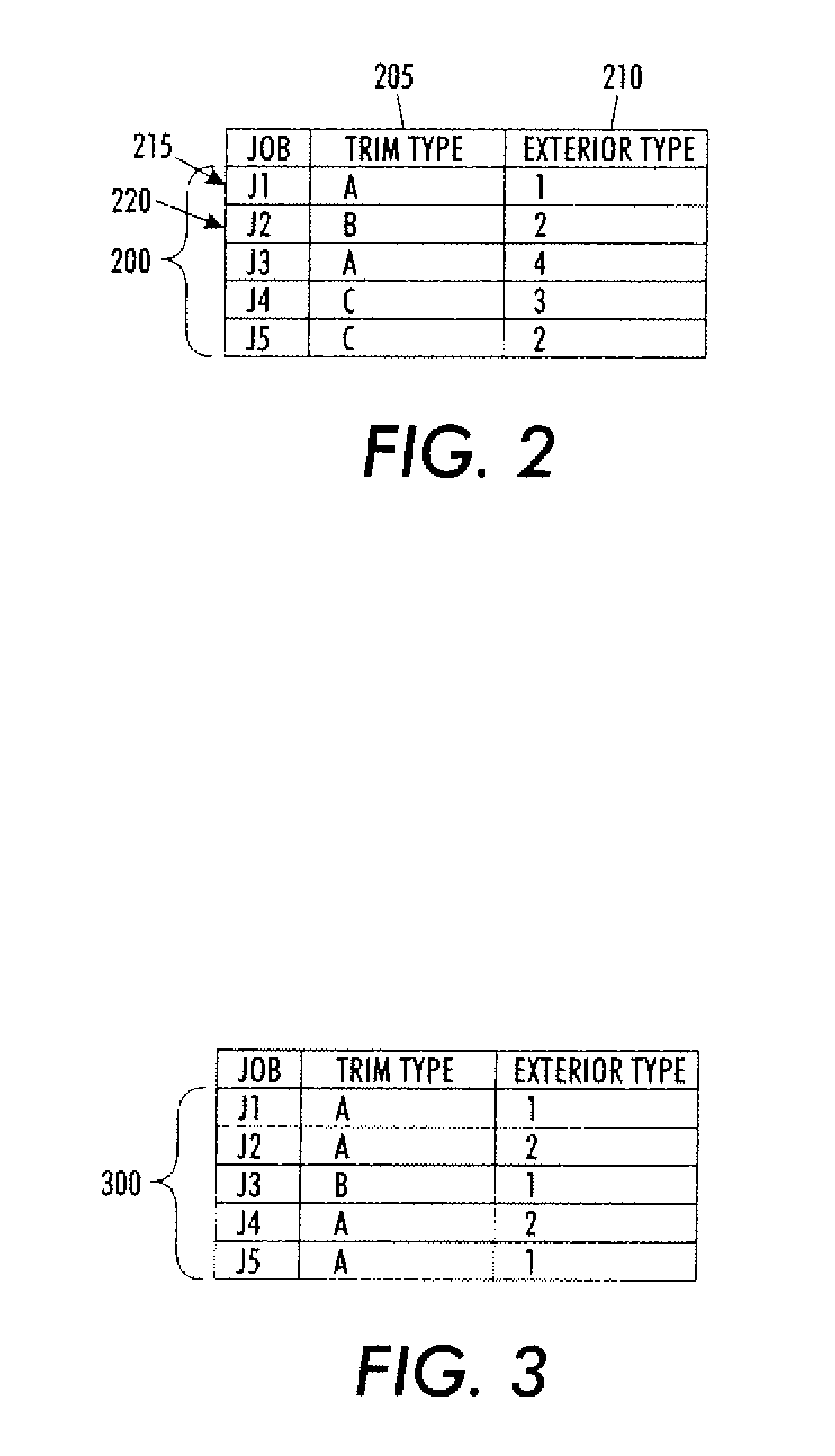Workflow partitioning method and system
- Summary
- Abstract
- Description
- Claims
- Application Information
AI Technical Summary
Benefits of technology
Problems solved by technology
Method used
Image
Examples
Embodiment Construction
[0021]For purposes of the discussion below, a “production environment” or “production process” refers to an entity having multiple items of equipment to manufacture and / or process items that may be customized based on customer requirements. For example, a vehicle production environment may exist in an automobile assembly plant, where different areas exist to assemble and / or finish portions of the automobile such as the engine, trim, drive train, and other parts. A document production environment includes document production resources, such as printers, cutters, collators and the like. A chemical, pharmaceutical or other process industry production environment may include production resources such as chemical processing units, vessels, heating equipment, mixing equipment and the like. A production environment may be a freestanding entity, including one or more production-related devices, or it may be part of a corporation or other entity. Additionally, the production environment may ...
PUM
 Login to View More
Login to View More Abstract
Description
Claims
Application Information
 Login to View More
Login to View More - R&D
- Intellectual Property
- Life Sciences
- Materials
- Tech Scout
- Unparalleled Data Quality
- Higher Quality Content
- 60% Fewer Hallucinations
Browse by: Latest US Patents, China's latest patents, Technical Efficacy Thesaurus, Application Domain, Technology Topic, Popular Technical Reports.
© 2025 PatSnap. All rights reserved.Legal|Privacy policy|Modern Slavery Act Transparency Statement|Sitemap|About US| Contact US: help@patsnap.com



